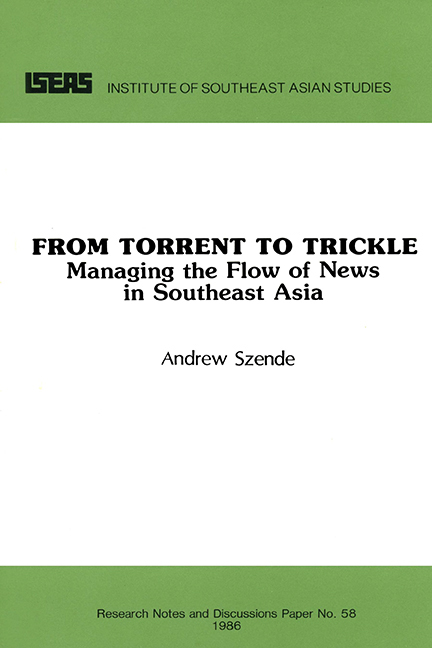I - The News Flow Problem and ASEAN
from PART 1 - INTRODUCTION
Published online by Cambridge University Press: 21 October 2015
Summary
The debate about the flow of news in the world has been going on for more than a quarter century, but has been particularly intense during the past decade or so. Essentially, the debate has been between the West or the developed world on the one side and the developing countries of Asia, Africa and Latin America or the Third World on the other side. It has concerned what is usually called the free flow of news, a term which means different things to different people. In the Western sense, it means the unfettered collection of news and its subsequent distribution without any barriers to prevent its flow among the nations of the world. In the Third World sense, it means several other things. It means cultural imperialism or one-way flow, whereby news from the West is allowed to inundate the Third World, bringing with it a totally western orientation, including western points of view, western biases, western values, western ideas and the like. In this perception of the news, the four major western news agencies – the Associated Press (AP) and United Press International (UPI) based in the United States, Agence France Presse (AFP) based in France, and Reuter, based in Britain – provide a flood of news to the Third World, whether the Third World wants it or not and whether the Third World is interested in it or not, while giving short shrift to much of what goes on in the Third World itself. When they do write about developing countries, they allegedly emphasize negative aspects, such as disasters, corruption, crime, violence, poverty and the like. And yet, in spite of these biases and inadequacies, the Third World must rely on the international agencies for news of other developing countries, because they are the only agencies with widespread networks.
- Type
- Chapter
- Information
- From Torrent to TrickleManaging the Flow of News in Southeast Asia, pp. 3 - 13Publisher: ISEAS–Yusof Ishak InstitutePrint publication year: 1986

